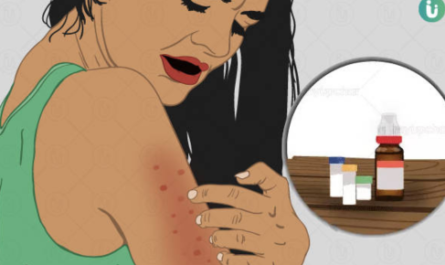1. Introduction to Milk Allergy in Babies
Milk allergy is a common condition in infants, where the immune system reacts adversely to proteins found in cow’s milk. This allergy can cause a range of symptoms, including rashes on the face. Understanding and managing this condition is crucial for the health and comfort of your baby.
2. Symptoms of Milk Allergy in Babies
Symptoms of milk allergy in babies can vary but often include skin reactions like rashes, hives, and eczema. Other symptoms may include gastrointestinal issues such as vomiting, diarrhea, and abdominal pain, as well as respiratory symptoms like wheezing and nasal congestion.
3. Understanding Baby Rash on Face Due to Milk Allergy
Rashes on the face due to milk allergy typically appear as red, itchy patches or bumps. These rashes can cause significant discomfort for your baby. It is essential to identify the cause to provide appropriate treatment and prevent further reactions.
4. Causes of Milk Allergy in Infants
Milk allergy in infants is caused by an overreaction of the immune system to the proteins in cow’s milk. This can happen when a baby is fed formula containing cow’s milk or when a breastfeeding mother consumes dairy products that pass into her milk.
5. Diagnosing Milk Allergy in Babies
Diagnosing milk allergy involves observing symptoms and conducting tests. A healthcare provider may perform a skin prick test or blood test to detect specific antibodies. An elimination diet, where dairy is removed and then reintroduced, can also help confirm the allergy.
6. Treating Baby Rash on Face from Milk Allergy
Treatment for a baby rash on the face caused by milk allergy includes eliminating cow’s milk from the baby’s diet. This may involve switching to a hypoallergenic formula or modifying the breastfeeding mother’s diet. Topical treatments like moisturizing creams or prescribed medications can help soothe the rash.
7. Choosing Hypoallergenic Formulas
For babies with milk allergy, hypoallergenic formulas are recommended. These formulas contain extensively hydrolyzed or amino acid-based proteins, which are less likely to trigger an allergic reaction. Always consult with a pediatrician before making formula changes.
8. Breastfeeding and Milk Allergy
Breastfeeding mothers of babies with milk allergy should eliminate dairy products from their diet. This can prevent the transfer of cow’s milk proteins through breast milk, reducing the risk of allergic reactions in the baby.
9. Identifying Hidden Sources of Dairy
Dairy can be found in many unexpected foods. Parents must read labels carefully to avoid hidden sources of milk in processed foods. Ingredients like whey, casein, and lactose indicate the presence of dairy.
10. Alternative Sources of Calcium
Babies and breastfeeding mothers avoiding dairy need alternative sources of calcium. These can include fortified plant-based milks, leafy green vegetables, and calcium supplements. Ensuring adequate calcium intake is essential for bone health.
11. Managing Eczema in Babies with Milk Allergy
Eczema is a common skin condition in babies with milk allergy. Managing eczema involves keeping the skin moisturized, avoiding irritants, and using prescribed medications if necessary. Maintaining a dairy-free diet is crucial for preventing flare-ups.
12. Foods to Avoid for Breastfeeding Mothers
Breastfeeding mothers of babies with milk allergy should avoid all dairy products, including milk, cheese, butter, and yogurt. It’s also important to be cautious with processed foods that may contain hidden dairy ingredients.
13. Monitoring Baby’s Symptoms
Regularly monitoring your baby’s symptoms can help manage milk allergy effectively. Keeping a diary of foods consumed and any reactions can aid in identifying triggers and adjusting the diet accordingly.
14. When to See a Doctor
Consult a doctor if your baby shows signs of a milk allergy, such as persistent rashes, vomiting, diarrhea, or respiratory issues. Early diagnosis and management are essential to prevent complications and ensure your baby’s well-being.
15. Preventing Secondary Infections
Babies with rashes from milk allergy are at risk of secondary infections due to scratching. Keeping nails trimmed and using anti-itch creams can help prevent infections. Consult a healthcare provider for appropriate treatments if infections occur.
16. Understanding Cross-Reactivity
Cross-reactivity occurs when babies allergic to cow’s milk also react to other animal milks, like goat or sheep milk. It’s important to avoid all types of animal milk if your baby has a confirmed milk allergy to prevent allergic reactions.
17. Long-Term Management of Milk Allergy
Managing milk allergy in the long term involves consistent avoidance of dairy products and regular check-ups with a healthcare provider. Many children outgrow milk allergies, but ongoing monitoring is necessary to manage symptoms effectively.
18. Nutritional Guidance for Milk-Free Diet
A milk-free diet requires careful planning to ensure nutritional needs are met. Consulting with a dietitian can help parents create a balanced diet for their baby, ensuring they receive all essential nutrients without dairy.
19. Recognizing Severe Allergic Reactions
Severe allergic reactions, such as anaphylaxis, require immediate medical attention. Symptoms include difficulty breathing, swelling of the face or lips, and severe hives. Having an action plan and knowing how to use an epinephrine auto-injector is crucial for emergencies.
20. Support Groups and Resources
Joining support groups for parents of children with allergies can provide valuable information and emotional support. Sharing experiences and tips with other parents can help manage the challenges of raising a child with a milk allergy.
21. Introducing Solid Foods to Allergic Babies
When introducing solid foods to babies with milk allergy, start with single-ingredient foods and monitor for reactions. Avoid dairy-containing foods and consult with a pediatrician for safe food introduction practices.
22. Understanding the Difference Between Milk Allergy and Lactose Intolerance
Milk allergy and lactose intolerance are different conditions. Milk allergy involves the immune system, while lactose intolerance is a digestive issue due to the inability to break down lactose. Understanding the difference is important for proper management.
23. Safe Dining Out Practices
Dining out with a baby who has a milk allergy requires caution. Inform restaurant staff of the allergy, ask about ingredients, and choose dairy-free menu options. Bringing safe snacks or meals for your baby can also prevent accidental exposure.
24. Reading Food Labels Carefully
Reading food labels is crucial for avoiding dairy. Look for terms like whey, casein, and lactose, which indicate the presence of milk. Familiarize yourself with common dairy-containing ingredients to avoid accidental exposure.
25. Future Outlook for Babies with Milk Allergy
Many children outgrow milk allergy by the age of 3 to 5 years. Regular follow-ups with a healthcare provider can help monitor the allergy’s progression. With careful management and dietary adjustments, babies with milk allergy can lead healthy, normal lives.



